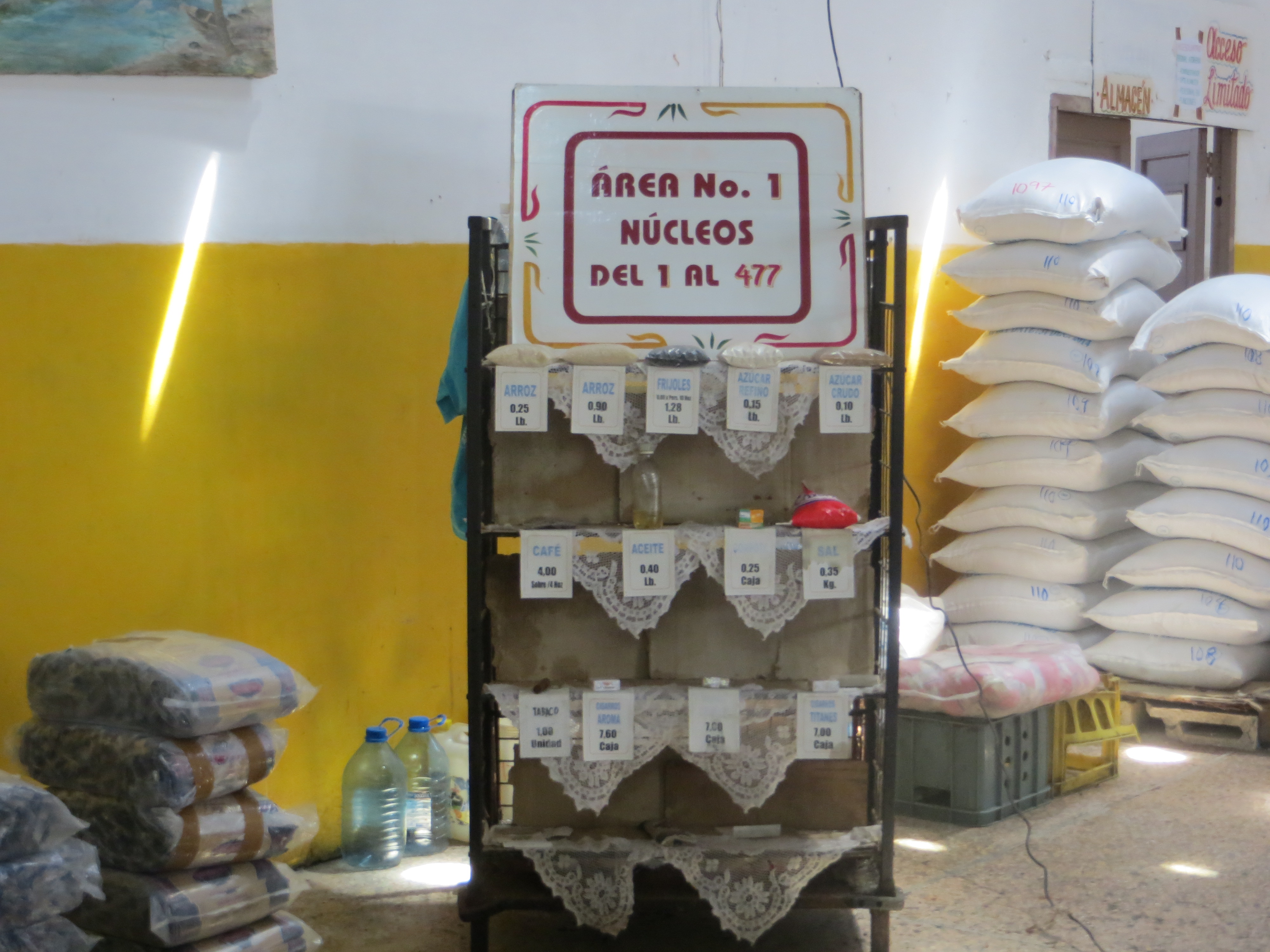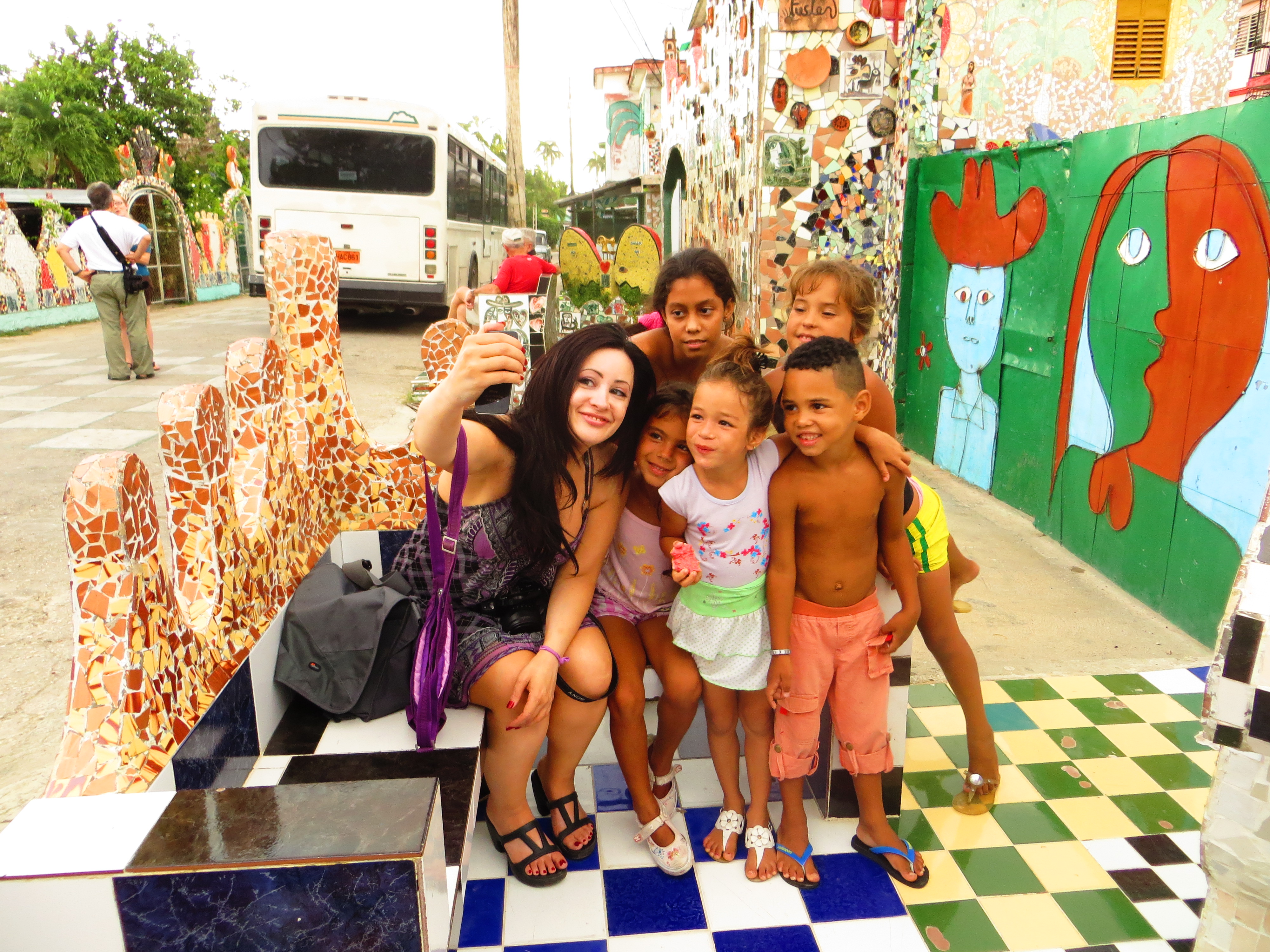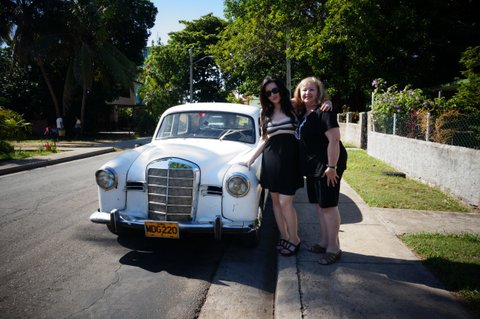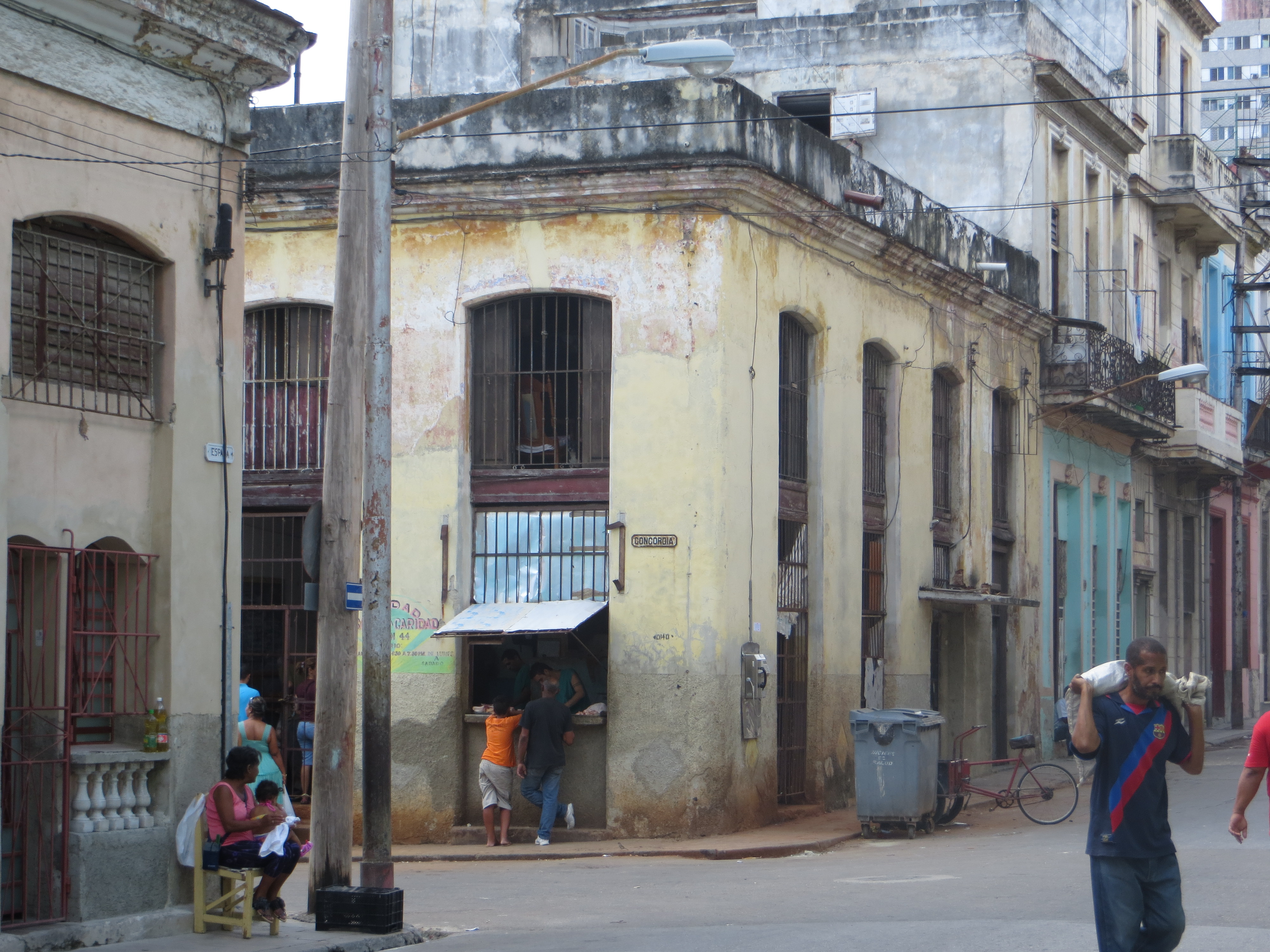My daughter Dawn and I knew Cuba would play with our expectations as soon as we landed. The female personnel at the Havana airport were dressed in conventional style uniforms but where their skirt hems ended they had on fishnet or other patterned stockings. It was communism with a Latin twist! Dawn looked at these women and said “I have to take pictures of that.” It was the beginning of several thousand photos Dawn took, which is not surprising since Cuba is a photographer’s paradise. There is the tropical lushness of the island, but there are also the numerous beautiful buildings and houses, albeit crumbling and in disrepair, which only serves to give them a haunting elegance and a kind of visual purity.
“Frozen in time” was to be a part of the uniqueness of our experience in Cuba. We couldn’t use our cell phones, and there was no wireless Internet at the Martin Luther King Jr. Center, a hostel type facility where we were staying. Our delegation of 22 persons ranged in age from 30 to 90, so even the younger ones had to unplug while we were there. Also, because of the US trade embargo, US issued credit and debit cards are not accepted anywhere in Cuba. It’s old style traveling where you have to decide ahead of time how much money you want to bring to exchange into the local currency. There was no rushing to the ATM to get extra cash like I usually do when I’m on a trip.
We were surprised by the friendliness of the people toward us, thinking they might be angry at the US for the embargos and the many economic problems. But all the Cubans we met seemed to be able to separate the people from the policies, and appeared appreciative of us for visiting their country. Cuba is a poor nation that works hard to provide for its citizens by granting free healthcare and education to all, but most citizens have very little in terms of material goods.
We visited a government “bodega” where residents use ration cards to buy a very restricted supply of staples at subsidized prices. We met with artists who cannot purchase paints or inks; farmers who can’t find necessary netting; a carpenter who surprised us when he related how lumber is not for sale anywhere but only on the illegal black market. The inability to purchase supplies is not simply due to lack of money. Yes, many items cost more than what the average person can afford, but it is also that these items are unavailable for sale on the island. Every artist and artisan we met told us that they are only able to continue their craft through the help of friends from other countries who bring or ship them the artistic materials they need.

Many of us thought that a Cuban would have a difficult time getting US citizenship, but actually it is the opposite. A US law passed in the 1960s states that any Cuban who touches American soil can automatically ask for asylum. In 2009, the Obama administration lifted travel restrictions so many Cubans, including our two Cuban translators are now visiting their relatives in the US. In my American mind, I did not understand the choice to stay and live with such economic difficulties when US citizenship is possible. But these women told me the hardship in Cuba is material, not spiritual. There is connectedness, caring for others, and warmth between people that they find missing in the US. An example to me was the Cuban taxi driver who knew none of the delegates involved but insisted they stay inside his tiny apartment visiting with his family, out of the hot sun, while he drove one of their members to an emergency clinic visit.

Also, Cubans say they appreciate the way culture is held in high esteem and is made accessible to everyone. Ticket prices for attending the ballet, theatre and art exhibits are extremely low, so that all citizens can participate. One of our most interesting stops was at a shop, Ediciones Vigia in Mantanzas, where they make handmade books with prices set by the government to make them more affordable.
In Cuba, the hold of the socialistic way of life is loosening and some individual commerce is being allowed. All the Cubans we met acknowledge that this is a time of great transition, in which their country is moving towards a new form of organization, although there is no consensus about what exactly that future will look like.
I would strongly urge anyone who has the opportunity to visit Cuba NOW. You need to go before as one travel writer expressed it— the US ends its travel and trade embargo and the island is transformed faster than you can say “Hard Rock Café Havana.” Don’t wait or you might miss experiencing the real heart of Cuba!

~ By guest blogger Linda Harris. Linda and her daughter went on 10-day trip to Cuba in July 2013 as part of a Witness for Peace delegation. Witness for Peace is a 30-year-old organization that has sent over 10,000 people to several Latin American countries where staff who live in those countries introduce the delegates to pertinent people and issues that are affecting US relationships with those countries.
